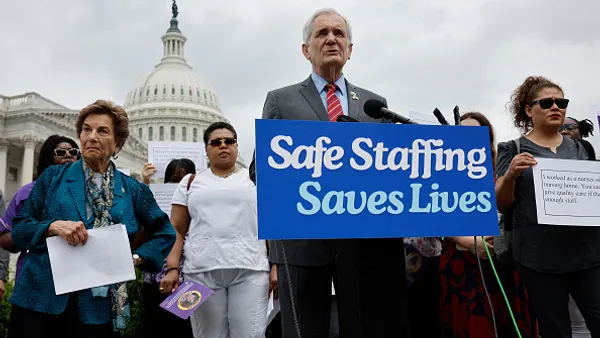Dive Brief:
- Youth participation in apprenticeship — considered those ages 16 to 24 — has been historically low, as has diversity of gender and age. While the age balance is shifting due to U.S. Department of Labor investments in apprenticeship, diversity remains lacking, according to a report from Jobs for the Future.
- The “earn-while-you-learn” model took off between 2010 and 2020, JFF said, but the percentages of Black and women apprentices “have not budged significantly,” due in part to occupational segregation and ongoing systemic problems with workers of color feeling welcomed into traditional apprenticeship spaces (largely trades).
- The causes behind apprenticeship discrepancies “are complex and multifactorial,” the report noted, and “included exclusionary recruitment strategies that often failed to attract women and people of color and were heavily based on word of mouth.” In addition, “workplaces that hire apprentices have sometimes been inhospitable to people who aren't white or male.”
Dive Insight:
The pandemic hit the apprenticeship model hard, reflected in JFF’s report through stark losses of new youth apprentices in 2020. But DOL and various employer groups have continued to invest in the “earn-while-you-learn” model as a key way to attract much-needed talent to various sectors.
DOL has granted money to apprenticeship programs in pandemic-stricken fields, like manufacturing and semiconductor production, as well as programs that “implement required diversity, equity and inclusion efforts and demonstrate their commitment to adopt, expand and promote these efforts,” the department said in an announcement in 2021.
Notably, efforts have borne fruit. Apprenticeships have expanded outside the traditional construction trades, opening up opportunities in a swath of fields — though this may be contributing to the continued gender segregation of apprenticeship, JFF’s report notes. But it is also engaging more young workers in STEM fields; IT organizations, in particular, have shown interest in the apprenticeship model.
When implemented well, apprenticeships can also be hugely important to diversity efforts, sources previously told HR Dive. One pilot program in California aimed to showcase how such a model could be a boon to workers with disabilities, providing them with opportunity and employers with a steady source of talent.














